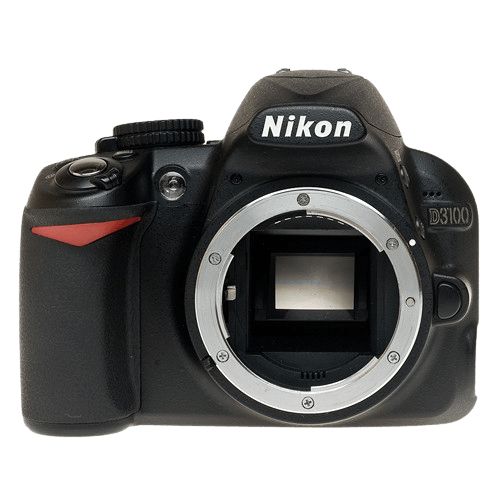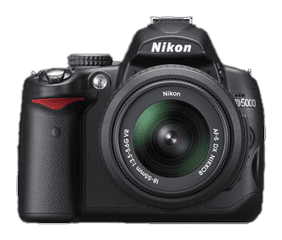Nikon D3100 vs D5000 Comparison
Nikon D3100

Nikon D5000

The Nikon D3100 and Nikon D5000 are both DSLR cameras with equal scores of 41/100. Released in 2010, the D3100 has a launch price of $699, while the D5000 was released in 2009 with a launch price of $730. Both cameras share similar specifications, but there are differences that set them apart.
The Nikon D3100 is lighter and more compact, measuring 124 x 96 x 75mm and weighing 505g. This makes it easier to carry around and handle during photography sessions. On the other hand, the Nikon D5000 is slightly larger and heavier, measuring 127 x 104 x 80mm and weighing 590g.
While both cameras have the same score, it is worth noting that the D3100 is a more recent model and comes with a lower launch price. The D5000, despite being an older model, is still a solid choice for those who prefer a slightly larger and heavier camera. Ultimately, the choice between these two cameras depends on individual preferences and budget considerations.
Nikon D3100 vs D5000 Overview and Optics
The Nikon D5000 outperforms the Nikon D3100 in optics with a score of 45/100 compared to the D3100’s 41/100. Both cameras share a number of specifications, including the CMOS sensor type, APS-C sensor size, Nikon F DX lens mount, and the lack of image stabilization. Despite these similarities, there are key differences that contribute to the higher score of the D5000.
The D5000 has a faster shooting speed of 4 frames per second, compared to the D3100’s 3 frames per second. This allows the D5000 to capture action more effectively. Additionally, the D5000’s sensor has a higher DXOMARK score of 72, compared to the D3100’s 67, indicating superior image quality. Although the D5000 has a lower megapixel count (12.3) than the D3100 (14.8), this difference is not significant enough to impact the overall image quality.
On the other hand, the Nikon D3100 has a more advanced Expeed 2 processor, compared to the D5000’s Expeed processor. This may result in faster processing times and better performance in certain situations. However, this advantage is not enough to overcome the D5000’s superior optics.
When considering the optics of the Nikon D3100 and D5000, the D5000 is the better choice due to its faster shooting speed and higher sensor score. While the D3100 has a more advanced processor, this does not outweigh the benefits offered by the D5000’s optics. Ultimately, those seeking a camera with superior optics should opt for the Nikon D5000.
Nikon D3100 vs D5000 Video Performance
When comparing the Nikon D3100 and the Nikon D5000 in terms of video capabilities, it is important to note that the Nikon D3100 does not have any video functionality. This means that this camera cannot record videos and is solely designed for capturing still images. In contrast, the Nikon D5000 does offer video recording features, which we will discuss below.
The Nikon D5000 has a video score of 49 out of 100. It records videos in standard HD resolution, with a maximum video dimension of 1280 x 720 pixels. This resolution is suitable for casual video recording and sharing on social media platforms. Additionally, the Nikon D5000 can record videos at a maximum frame rate of 24 frames per second (fps). This frame rate is adequate for capturing smooth motion in videos, although it may not be suitable for fast-paced action scenes or professional video production.
One notable feature of the Nikon D5000’s video capabilities is its built-in time-lapse functionality. This feature allows users to create time-lapse videos, which are a series of images taken at set intervals and combined into a single video that shows the passage of time. Time-lapse videos can be used to capture events such as sunsets, plant growth, or cityscapes, adding a creative dimension to the camera’s video capabilities.
When considering the video capabilities of these two cameras, the Nikon D5000 clearly has the advantage due to its ability to record videos, while the Nikon D3100 lacks this feature. The Nikon D5000’s video features, including standard HD resolution, a maximum frame rate of 24fps, and built-in time-lapse functionality, make it a versatile camera for capturing both still images and videos.
Nikon D3100 vs D5000 Features and Benefits
The Nikon D3100 emerges as the winner in this comparison, scoring 36 out of 100 points in features, while the Nikon D5000 trails closely with a score of 34. These two cameras share several specifications, including screen resolution at 230,000 dots, the absence of a touchscreen, flip screen, GPS, WIFI, and Bluetooth.
The Nikon D3100 outperforms the D5000 with its larger 3-inch screen, providing a bigger and clearer display for composing images and navigating menus. This advantage allows photographers to review their shots more easily and efficiently on the D3100 than the D5000, which has a smaller 2.7-inch screen.
On the other hand, the Nikon D5000 does not have any significant advantages over the D3100 in terms of features. Both cameras lack essential connectivity options like GPS, WIFI, and Bluetooth, which are common in modern cameras. They also miss out on the convenience of a flip screen and touchscreen functionality.
To sum up, the Nikon D3100 is a marginally better choice than the Nikon D5000, mainly due to its larger screen size. However, both cameras fall short in offering essential features found in contemporary models. The absence of connectivity options and modern screen functionalities may limit the appeal of both cameras to potential buyers. As such, individuals in search of a camera with better features may want to explore other options in the market.
Nikon D3100 vs D5000 Storage and Battery
The Nikon D3100 outperforms the Nikon D5000 in storage and battery, scoring 53/100 compared to the D5000’s 27/100. Both cameras share similarities in storage, featuring one memory card slot each and supporting SD and SDHC memory cards. However, the D3100 also accepts SDXC cards, providing users with more storage options.
In terms of battery life, the D3100 offers a substantial advantage with 4500 shots per charge, while the D5000 only provides 510 shots. The D3100 uses the EN-EL14 battery type, which contributes to its longer battery life. Conversely, the D5000 relies on the less efficient EN-EL9a battery type. Neither camera supports USB charging.
Although the D5000 lags behind the D3100 in both storage and battery, it still offers acceptable performance for casual photographers. Ultimately, the D3100’s superior storage compatibility and battery life make it the better choice for photography enthusiasts who require extended shooting capabilities.
Nikon D3100 vs D5000 – Our Verdict
Are you still undecided about which camera is right for you? Have a look at these popular comparisons that feature the Nikon D3100 or the Nikon D5000:
